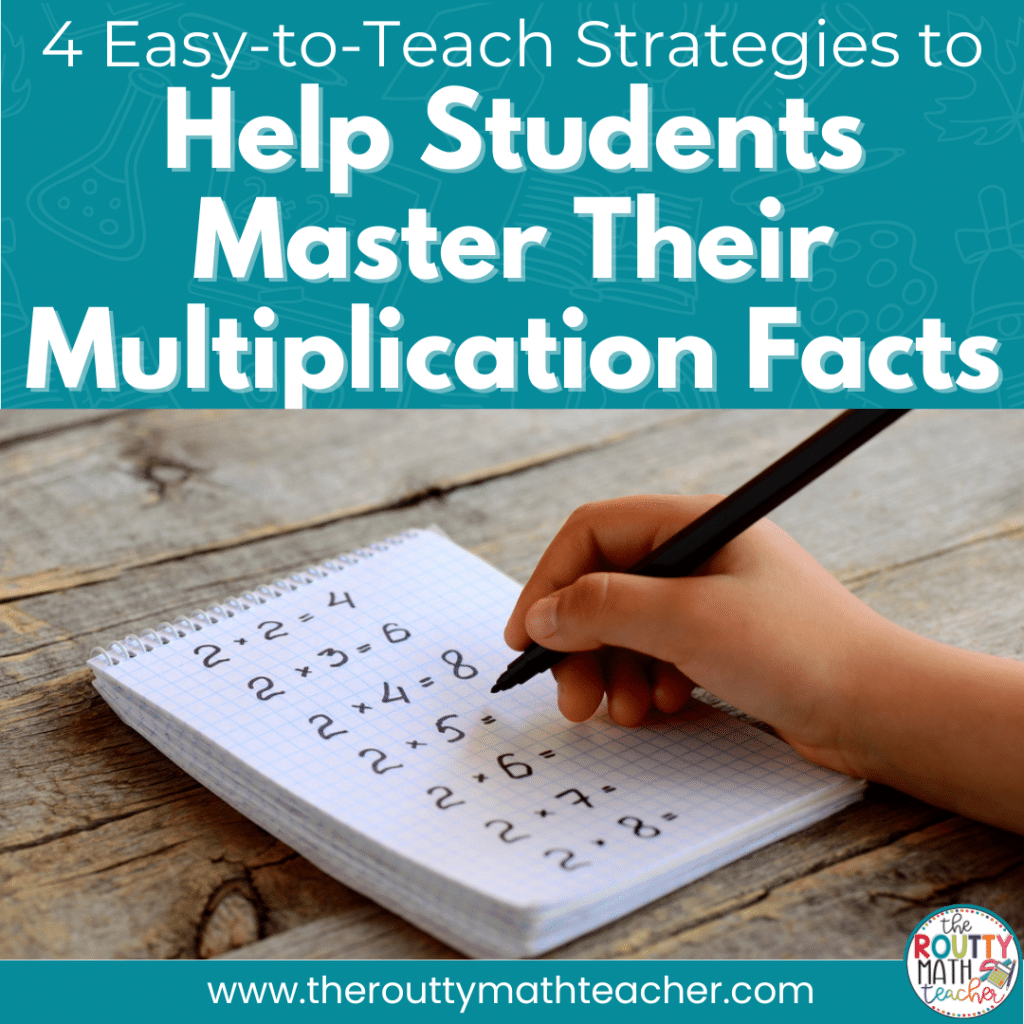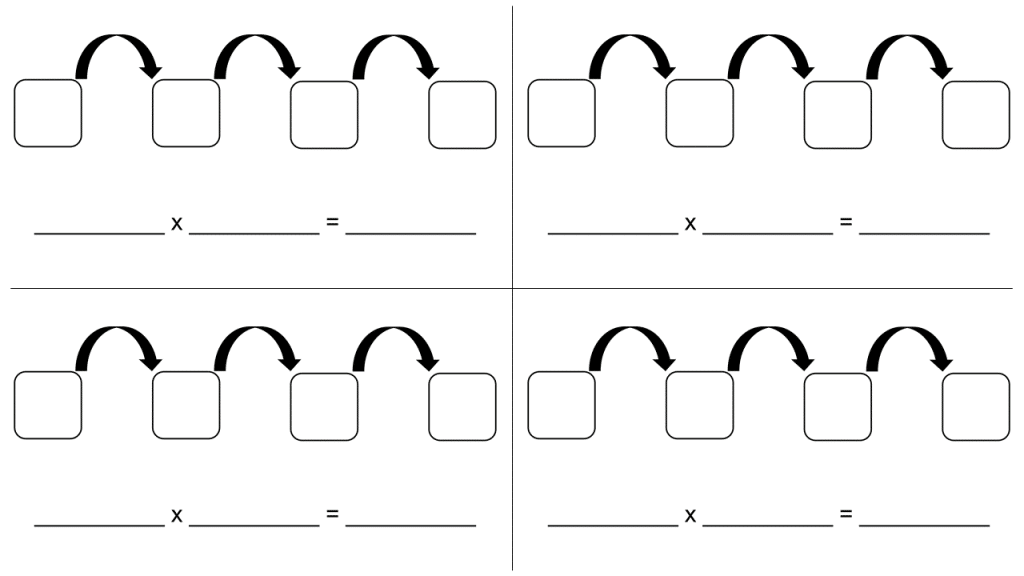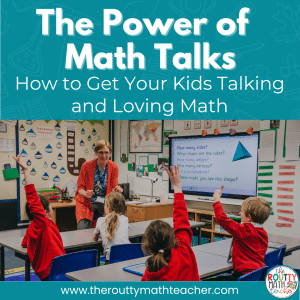
Multiplication Facts: 4 Strategies

Students often struggle to learn their multiplication facts. In fact, when students struggle to recall them, it can prevent them from being successful in math because they don’t have the necessary skills to master more complex word problems and tasks. While it’s not an easy process, there are strategies students can use to learn their multiplication facts. In this post, I share strategies for helping students learn their 4s, 5s, 6s, 8s, and 9s.
When I first met Lauren, she could not multiply by eight.
I don’t know if it was a mental block or if she just didn’t like the number 8, but she could not retain any of her eights when it came to learning her multiplication facts, keeping her from being successful in the classroom.
Perplexed, I accepted the challenge and agreed to tutor Lauren.
When it comes to learning multiplication facts, I was old school. I believed students could learn their multiplication facts by reviewing flashcards over and over again. (I know– I’m embarrassed to admit it, but that’s what I thought.)
It wasn’t long after I started working with Lauren that I realized flashcards weren’t going to get the job done.
But, I was at a loss. I learned my math facts using flashcards, but that clearly wasn’t working for Lauren.
I decided to try something I learned about during a professional development session at school.
Admittedly, I was skeptical at first, but it turned out to be the best decision I could have made.
Using a Strategy to Learn the Eights
I had recently learned a strategy for multiplying by eight, so I thought I would try it with Lauren.
The strategy was called, “Double, Double, Double.” To use this strategy, students double the starting number, then double that value. They then double the last value.
At first, it seemed a little ridiculous to do all that to memorize the eights, but we kept working on it.
After I introduced the strategy, we practiced it using a graphic organizer designed to show the doubling process. (See image below.)

Once Lauren was comfortable with the doubling process, I used games to reinforce the concept.
It took several weeks of tutoring, but Lauren eventually learned all of her eights and was able to apply the strategy when she needed to multiply a larger number by 8.
Strategies for Learning Multiplication Facts
There are several strategies teachers can use to help students learn their multiplication facts. Here are a few of my favorites.
A. Double, Double: Multiply by 4
Similar to multiplying by two, students can double the initial quantity and then double that amount to equal an amount multiplied by four. For example, if you want to multiply 6 x 4, double 6 one time to get 12 and then double 12 to get 24; therefore 6 x 4 = 24.
B. Use Tens to Make Fives: Multiply by 5
Most students pick up the strategy for multiplying by 10 pretty quickly, so we can use that strategy to help us multiply by five. To use the strategy, students multiply by 10 and then cut the quantity in half to get the multiple of 5. For example, if you want to multiply 3 x 5, multiply 3 times 10 to get 30 and cut the value in half to get 15; therefore, 3 x 5 = 15.
C. Double, Double, Double: Multiply by 8
This strategy builds on the strategy for multiplying by 2 and 4. Students double the initial quantity. Then, they double that quantity. Finally, they double the resulting amount. For example, if you want to multiply 7 x 8, double 7 to get 14. Then, double 14 to get 28. Finally, you double 28 to get 56; therefore, 7 x 8 = 56.
D. Build Up and Build Down: Multiply by 6 and 9
This strategy uses 5 and 10 to make multiples of 6 and 9. To use this strategy, students either multiply by 5 and add a group to make six groups or they multiply by 10 and subtract a group to make 9 groups. For example, if you want to multiply 6 x 6, then you multiply 6 x 5 to get 30 and add one group of 6 to get 36; therefore, 6 x 6 = 36. Similarly, if you want to multiply 6 x 9, then you multiply 6 x 10 to get 60 and subtract one group of 6 to get 54; therefore, 6 x 9 = 54.
Moving Beyond the Strategies
Once students explicitly learn a strategy, provide a graphic organizer structured to support learning so students can use it as they practice the skill. (See the example below.)

When students are comfortable with the graphic organizer, move to simple card and dice games where students can practice the set of facts in a more engaging, but isolated, setting. If students still need to use it, allow them to use the graphic organizer.
Finally, when students are ready, begin using the strategy with larger numbers and include the target multiplication facts with other facts with which students are familiar to determine how well they are able to apply the strategy when they encounter the multiplication facts.
How to Get Started
Use a diagnostic tool to determine which multiplication facts students struggle with the most. Then, begin teaching students strategies to help them learn the facts with which they were not successful.
It may seem challenging at first, but with repeated practice, students will use the strategy more fluently and will eventually “memorize” their multiplication facts.
Download a free set of multiplication fact practice games using the form below.
Sound Off!
What strategies do you use to help your students learn their multiplication facts? Respond in the comments below.




